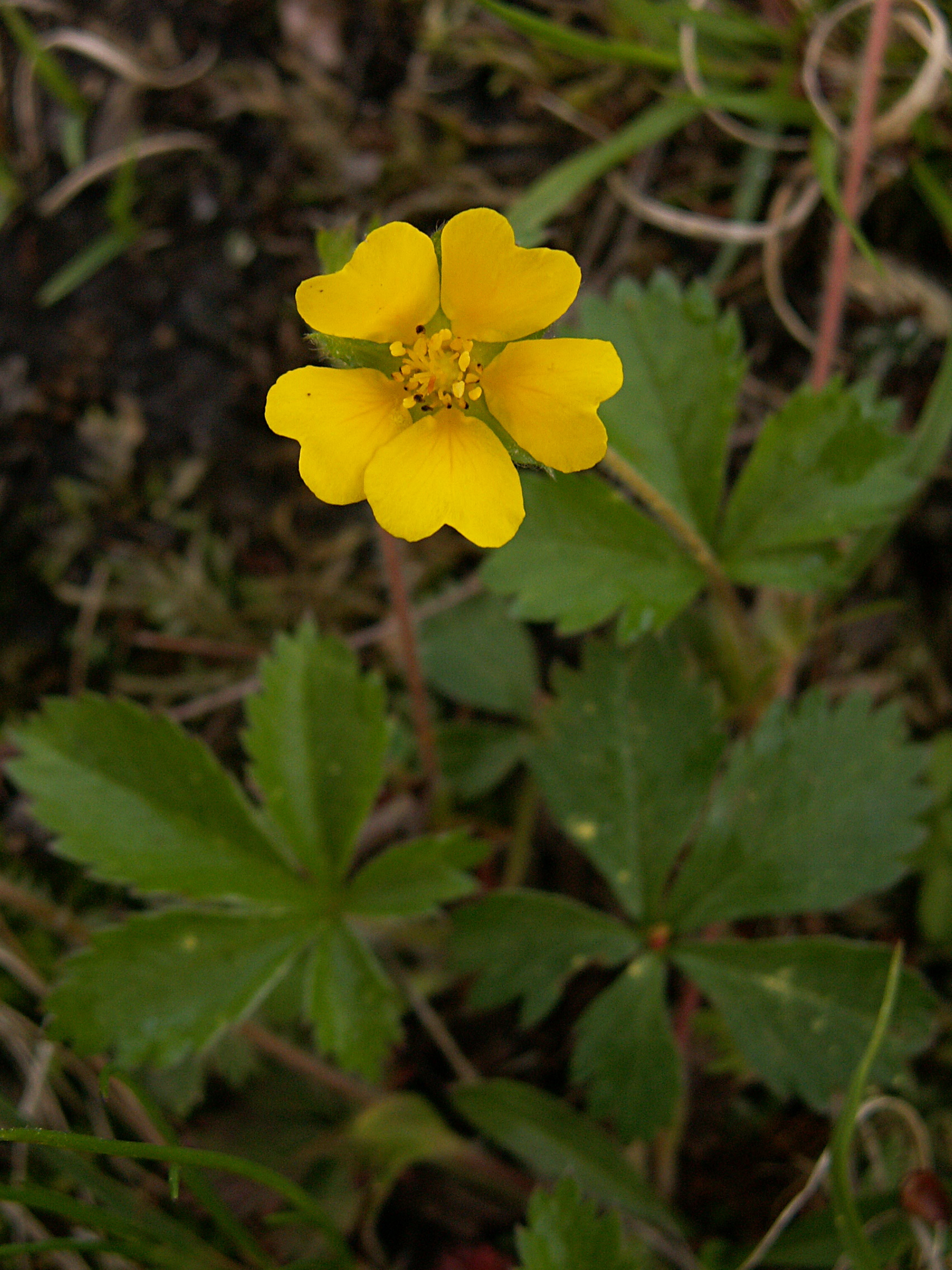 This plant looks very much like Indian Strawberry until we notice that the leaves apparently have five leaflets rather than three; we say apparently, because Gray tells us that the leaves are “3-foliolate but apparently 5-foliolate by the parting of the lateral leaflets.” The plants spread by wiry little runners; see the picture at the bottom of this article. These plants were blooming in early May in the lawn of the Allegheny Cemetery.
This plant looks very much like Indian Strawberry until we notice that the leaves apparently have five leaflets rather than three; we say apparently, because Gray tells us that the leaves are “3-foliolate but apparently 5-foliolate by the parting of the lateral leaflets.” The plants spread by wiry little runners; see the picture at the bottom of this article. These plants were blooming in early May in the lawn of the Allegheny Cemetery.
It is very difficult to distinguish between this species and Dwarf Cinquefoil (Potentilla canadensis), and indeed Gray considers Potentilla simplex a variety of P. canadensis:
POTENTÍLLA L. CINQUEFOIL. FIVE-FINGER. Calyx flat, deeply .5-cleft, with as many bracilete at the sinuses, thus appearing 10-cleft. Petals 5, usually roundish. Stamens many. Achenes many, collected in a head on the dry mostly pubescent or hairy receptacle; styles lateral or terminal, deciduous. Radicle superior. — Herbs, or rarely shrubs, with compound leaves, and solitary or cymose flowers; their parts rarely in fours. (Name a diminutive from potens, powerful, originally applied to P. Anserina, from its once reputed medicinal powers.)
Styles filiform, lateral; peduncles axillary, solitary, 1-flowered; achenes glabrous; receptacle very villous; herbaceous perennials, with yellow petals.
P. canadénsis L. Suberect (2-7 dm. high) or procumbent, at length often rooting at the tip; stem spreading-hirsute, flowering from the node above the second well-developed internode; leaves 3-foliolate but apparently 5-foliolate by the parting of the lateral leaflets; leaflets commonly more oblong, serrate rather than dentate, obscurely villous or entirely glabrate above, canescent-silky to green and merely appressed-villous on the veins beneath. — Dry sandy soil, s. Me. to Vt., along the Great Lakes to Minn., Kan., and southw. May-July.
Var. símplex (Michx.) T. & G. Stem covered with shorter appressed or sub-appressed hairs or glabrate; leaflets (apt to be oblanceolate) rather shortly appressed-villous on the veins beneath. (P. simplex Michx.) — Chiefly In dry sandy soil, very common; N. S., southw. and westw.


